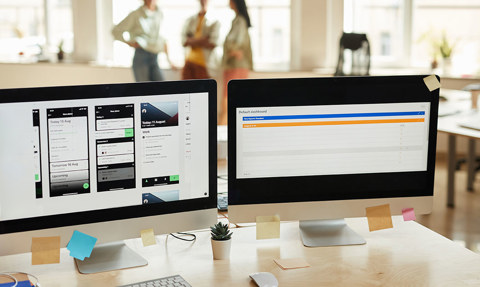Avoid these common mistakes when choosing event technology


With revamped post-pandemic interest in onsite events, event technology has become a hot topic again. But before explaining how to avoid common mistakes when choosing event technology for your business, first, we must understand what it is. Event technology is the set of digital tools that help event organizers execute projects and run their events. Today, as it was regular in the past, event planners combine different sets of tools to manage their events. On the opposite side, we have event management software that combines all these tools under one roof. Usually chosen by professional event organizers. Alas, the predominant event organizers' preference still is to stick with a combination of various event technologies. Therefore, it's common for event organizers to make mistakes using certain types of tools that are badly optimized or even unnecessary for the type of their business.
Significant advances in event technology, such as importing and exporting data, gamification for attendees, event badge printing, or development of event management software, can make a difference in driving the audience to your events and enriching the overall attendee experience, not to mention boosting sponsorship relations for even greater event success.
Unfortunately, event organizers are mostly unsure of how to use the latest event technology to optimize the engagement of their attendees. Knowing what not to do makes it easier to advance in cognition of event technology advancements. Let's see what common mistakes you should avoid when choosing event technology.
Before you dive headfirst into the world of event technology, it's essential to take a step back and understand the needs and preferences of your target audience. One of the most significant mistakes event planners make is selecting technology that doesn't align with their attendees' expectations.
Consider the demographic of your audience. Are they tech-savvy millennials who expect interactive event apps and live streaming? Or are they seasoned professionals who value networking opportunities facilitated by robust matchmaking tools? If avoided, it can lead to a mismatch between your target audience and the chosen event technology.
A common mistake in event planning is not setting clear objectives for the event and, consequently, not aligning your technology choices with these objectives. Every event should always have a purpose.
It looks like something that shouldn't be considered a mistake even by the rookie event organizers, but it commonly is by many. Event technology can be a significant expense, and one of the biggest mistakes event planners make when choosing event technology is wrong budgeting. Overspending on technology can eat into other crucial aspects of your event, such as marketing or entertainment. Set a realistic budget for your event technology. Consider the initial costs and ongoing fees for support, updates, and maintenance.
In today's digital landscape, event technology should complement and integrate seamlessly with your existing systems. Failing to consider integration capabilities is a common mistake, resulting in data silos and inefficiencies. When choosing event technology, make sure that it can integrate with your CRM, email marketing tools, and other essential systems. This ensures a smooth data flow and reduces the need for manual data entry.
Technical glitches can be a nightmare during an event. Relying solely on your in-house IT team to handle potential issues is a mistake. Be absolutely certain that the event technology provider offers reliable technical support! This includes a helpline, on-site support during the event, and a clear escalation process for critical issues. A proactive approach to technical support can minimize downtime and frustration for organizers and attendees.
While embracing the latest and most advanced event technology is tempting, overcomplicating the user experience is a common mistake. An overly complex interface can confuse and frustrate attendees. When choosing event technology, make sure it offers a user-friendly interface. Keep the user experience simple and intuitive.
Inefficient event registration leads to long lines, late start times, and anxious attendees. Get yourself familiar with various types of event technology, helping to smoothen up the registration process, but also don't hesitate to test it. For example, track the latest mobile printers for event badges and how to make them look great and more readable for scanning.
Event planners who rush through designing the physical setup of any event usually end up with confusing event layouts. It can create numerous problems for event staff and attendees (i.e., late activities, complicated setups for exhibitors or sponsors, getting lost in the venue, or decreased levels of attendee satisfaction). To avoid these mistakes, always create a floorplan for your event, it helps event planners to overcome and optimize the event experience throughout pre-event time, increase sales team performance levels, and bring more revenue from exhibitors.
Event planning techniques, insights, and technology constantly evolve, making choosing the right event technology necessary for the success of your event. Avoiding the above-mentioned common mistakes, such as neglecting audience needs, setting clear objectives, and overlooking budget constraints, makes a world of difference. Whether you opt to use standalone events or if your goal is to extract the most from professional tools such as event management software, event technology should always enhance the overall experience for organizers and attendees. Remember, technology should be a tool that simplifies and not complicates and frustrates.